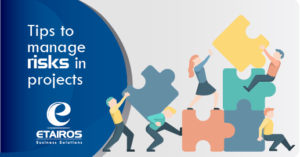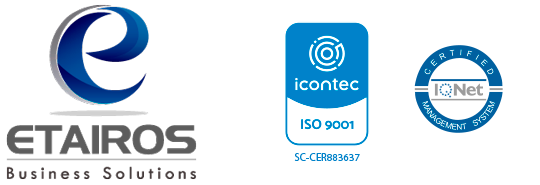
In the world we live in, risks are everywhere and the best way to deal with them is to prepare for them. A good practice is to include them as part of the project, register them, make them part of our meetings and even prioritize them, so we will feel calmer with what may happen.
Prioritize, analyze, plan, track and implement risk responses are important activities that will flow naturally when registering. But the really important thing is to identify opportunities to mitigate or avoid them, turning risks into improvements for our projects.
According to Bart Jutte (10 Golden Rules of Project Risk Management) these are the 10 golden rules for managing project risks.
Rule 1: Make risk management part of your project.
The first rule is essential for the successful management of project risks. If you do not integrate this into your project, you cannot get all the benefits and improvements in the project. This risk management must have an important weight within the project to carry out monitoring and control and to prevent them from happening as much as possible.
Rule 2: Identify the risks at the beginning of your Project.
The first step in managing project risks is to identify those who may be present. This requires an open mind that focuses on possible future scenarios. There are two main sources to identify risks, people and paper. People are the members of the team, in which each one contributes their experiences and knowledge. Other people to talk to are experts outside your project who have a history of the type of project or job. It is very important that the identification of risks is carried out from the planning phase of the project.
Rule 3: Communicate about the risks.
Failed projects show that project managers frequently ignored the big hammer that was about to hit them. If you do not want this to happen in your project, you better pay attention to risk communication. A good approach is to constantly include the communication of risks in the tasks carried out within the project, as well as in the follow-ups and advances within it.
Rule 4: Consider both threats and opportunities.
Project risks have a negative image: they are the “bad guys” that can damage your plans. However, risk approaches also focus on positive risks or project opportunities. These are the uncertain events that are beneficial for your project and organization. These “good guys” make your project faster, better and more profitable. Within the definition of risks and their mitigation plan, the positives and negatives must be taken into account.
Rule 5: Clarify property problems.
Some project managers think they are ready once they have created a list of risks. However, this is only a starting point. The next step is to make clear who is responsible for what risk. Someone has to feel and be responsible if a risk is not adequately addressed.
Rule 6: Prioritize risks.
Some risks have a greater impact than others. Therefore, it is recommended to devote time to the risks that may cause the greatest losses and gains or those that are most likely to occur and have a greater impact on the project.
Rule 7: Analyze risks.
Understanding the nature of a risk is a precondition for a good response. Therefore, it is important to take time to look more closely at individual risks and not reach conclusions without having identified and internalized the risk and its reason.
Rule 8: Plan and implement risk responses.
Implementing a risk response is the activity that really adds value to your project. Preventing a threat and minimizing the negative effects, are known as risk mitigation plans where tasks are defined to prevent the risk from occurring or activities are also defined in the event that the risk arises.
Rule 9: Record project risks.
It is a perfect communication tool that informs your team members and stakeholders what is happening. Management must be done during the project life cycle.
Rule 10: Monitoring of risks and associated tasks.
The risk log that you created as a result of the previous rule will help you track the risks and their associated tasks. Normally these risk plan activities are assigned to the Project managers, but in any kind of project, whether personal or work, it is always advisable to carry out adequate risk management.
Written by:
Camilo Castillo

